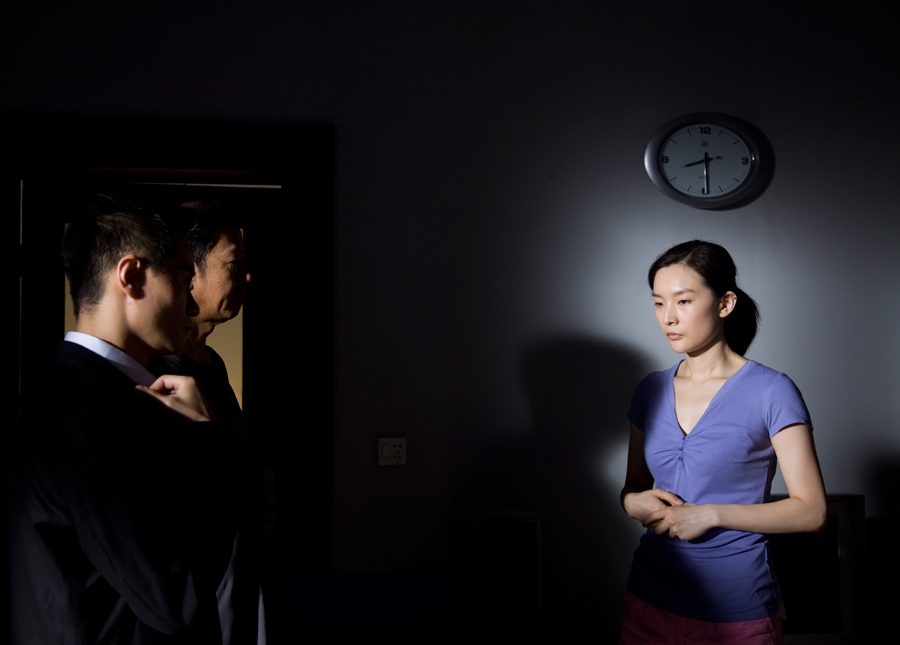Some may have thought Thomas J. Berghuis, the Guggenheim’s new curator of Chinese art, was audacious to mark his debut in New York with a solo show of work by a Beijing-based artist with meagre exposure in North America – even if that artist has the credentials of Wang Jianwei, whose career spans 30 years. With Time Temple, Berghuis clearly announces his ambition to redefine and reposition Chinese contemporary art within the globalised context.
The central work on show, the monumental four-panel painting Time Temple (all works 2014), fills an entire wall, creating, along with the two gallery columns that stand in front of it, a stagelike space. Rather than confronting a still image, the whole setup suggests an animated theatrical scene. Moving through the painting from one end to another, you notice the varying depth of each panel, repeated characters sitting or standing in what looks like a brightly lit committee room and abstract yellow stripes angling down like the beams of stage lights from the top righthand corner of each panel towards the protagonists. Across the gallery, on the opposite wall, another painting, also titled Time Temple, shows what looks like the cross-section of an archaeological site within a geometric form, reminding the viewer of the world seen through a microscope: complex, mysterious and slightly bewildering. In between the paintings, a series of sculptures flow poetically like a river throughout the gallery, guiding the viewer to move around the components, to imagine each moment that the artist has to come through to produce the artworks.
Moving from the gallery to the theatre, the artist’s Kafka-inspired film, The Morning Time Disappeared, tells the story of a young man who moved from the countryside to Beijing, and found that a series of bodily transformations had occurred to him overnight. Apart from the show and the screening, the live-performance component Spiral Ramp Library – inspired by the museum’s architecture and Jorge Luis Borges’s short story ‘The Library of Babel’ (1941) – gathers and circulates people and ideas within the museum space, aiming to show the artist’s interpretation of the role of the contemporary art museum and the spaces within it.
Wang, who posits the truth of his existence as the ultimate ‘object’ of creation, has pursued a trajectory of work encompassing painting, sculpture, video, performance and theatre, but is generally placed by critics among the new media art pioneers in China. The artist himself, however, seems less concerned with discussions of ‘media’ or how he is labelled. Rather, with Time Temple, it is the artist’s creative process that is on display. Every detail is supposed to recall the artist’s presence in the ongoing process – of creation as well as of life. In reality, the viewer may have to spend hours (if not days) reflecting on each object’s particulars, connecting with the truth that the artist proposes: the varied mounting depths of the monumental, four-panel painting with its graphic yellow lines superimposed at the junctures of each panel; the painting across the gallery with its abstraction of scientific form; the singular yet refined shapes and forms of the sculptures; the film and the live performance – with its layered soliloquies on ten philosophical topics – are even more challenging to customary perceptions. The curator and the artist encourage open and multiple interpretations, but cognitively processing these works may nonetheless tax even the most dedicated viewer.
This article was first published in the Spring 2015 issue of ArtReview Asia.
